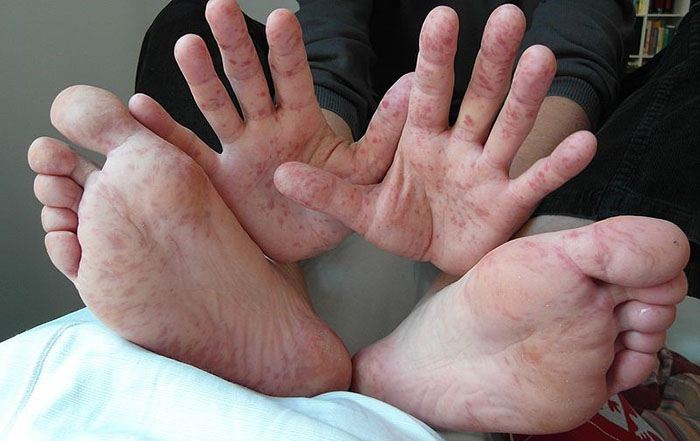Fitness Facts: Hand, foot and mouth disease - GCU Today
Fitness Facts: Hand, foot and mouth disease - GCU Today |
| Fitness Facts: Hand, foot and mouth disease - GCU Today Posted: 30 Oct 2019 09:38 AM PDT REVIEW OVERVIEW  This is the appearance of the rash caused by hand, foot and mouth disease. The rash can vary in severity from minimal painless lesions to multiple painful lesions. Also, some people have the lesions only on one body part while others have them on multiple body parts. (Photo credit: https://commons.wikimedia.org/wiki/File:Hand_Foot_%26_Mouth_Disease.png) By Connie Colbert Hand, foot and mouth disease is a common illness that causes sores in or on the mouth, on hands and feet, and sometimes on buttocks and legs.  Connie Colbert The sores may be painful. The illness usually doesn't last more than a week. It is common in children but also can occur in adults. It can occur at any time of year but is most common in the summer and fall. What are the symptoms?
At first you may feel tired, get a sore throat or have a fever of around 101-103°F (38-39°C). After a day or two, sores or blisters may appear. In some cases, a skin rash may appear before the blisters. The blisters may break open and crust over. The sores and blisters usually go away in a week or so. In some cases, people have no symptoms, or symptoms are very mild. What causes hand, foot and mouth disease? It is caused by a viral infection, most commonly by enterovirus or coxsackievirus. The virus can be spread through contact with an infected individual's nose and throat secretions (such as saliva, sputum or nasal mucus), blister fluid and feces (stool). Often the disease breaks out within a community. Symptoms usually appear 3-6 days after being exposed to the virus. This is called the incubation period. How is it diagnosed? A health care provider can tell by the symptoms you describe and by looking at the sores and blisters. Tests usually aren't needed. How is it transmitted? The virus may be spread to another person through:
How can spread be prevented? Hand, foot and mouth disease is highly contagious. If you have this disease, limit exposure to others while you have active signs and symptoms, especially fever. There is no vaccine to protect against the virus that causes hand, foot and mouth disease. To reduce risk of infection:
How is it treated?
Some types of beverages and food items tend to irritate the sores in the mouth and make for difficult ingestion of food. Below are some tips to relieve the general discomfort and make the blisters less irritable so that food consumption is easier:
|
| You are subscribed to email updates from "red mucus from nose,sputum" - Google News. To stop receiving these emails, you may unsubscribe now. | Email delivery powered by Google |
| Google, 1600 Amphitheatre Parkway, Mountain View, CA 94043, United States | |
Comments
Post a Comment